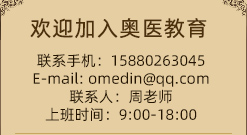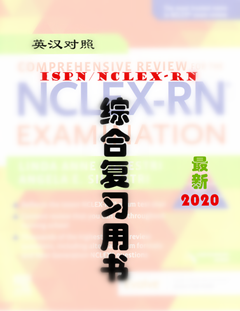| |
|
|
|
 |
在线QQ:
 |
|
|
|
|
|
|
|
|
|
《ISPN学习》总第713期
日期:2020-12-04 14:55:00
《ISPN学习》2020年12月04日总第713期
★ ISPN Review ★
Nursing Care for Pt. Receiving Direct-Acting Cholinergic Agonists
直接作用的胆碱能受体激动剂使用者的护理
Assessment: History and Examination 评估:病史与体检
- Assess for contraindications or cautions: Known allergies to these drugs to avoid hypersensitivity reactions; bradycardia, vasomotor instability, peptic ulcer, and obstructive urinary or GI diseases; recent GI or genitourinary (GU) surgery; asthma; parkinsonism or epilepsy, which could be exacerbated or complicated by parasympathetic stimulation; and current status of pregnancy and lactation because of the potential for adverse effects on the fetus or neonate.
评估有无禁忌或注意事项:对这些药物的已知过敏,以避免超敏反应;心搏徐缓、血管舒缩不稳定、消化性溃疡、梗阻性泌尿或GI疾病;最近GI或GU手术;哮喘;帕金森氏症或癫痫,副交感神经刺激可能加重病情或出现并发症;当前妊娠和哺乳状态,因为有潜在的对胎儿或新生儿不良效应。
- Perform a physical assessment to establish a baseline status before beginning therapy, determine the effectiveness of therapy, and evaluate for any potential adverse effects.
体格检查,确立治疗基线数据,确定治疗效果,评价有无任何潜在的不良效应
- Assess vital signs, including pulse and blood pressure, and cardiopulmonary status, including heart and lung sounds, to evaluate for changes related to cardiovascular effects of parasympathetic activity; obtain an electrocardiogram (ECG) as indicated to evaluate heart rate and rhythm.
评估生命体征,包括脉搏和血压;心肺状况,包括心音和肺音,评估与副交感神经系统活动心血管效应相关的变化;需要时行ECG,评价心率和心律
- Assess abdomen, auscultating for bowel sounds; palpate bladder for distention.
评估腹部,听诊肠鸣音;触诊膀胱有无膨胀
- Monitor intake and output, noting any complaints of urinary urgency, to monitor for drug effects on the urinary system.
监测摄入与排出量,注意尿急诉求,监测药物对泌尿系统的效果
Implementation with Rationale 实施及说明
- Ensure proper administration of ophthalmic preparations to increase the effectiveness of drug therapy and minimize the risk of systemic absorption.
确保眼用制剂使用正确,增强药物疗法效果,最大限度降低系统吸收风险
- Administer oral drug on an empty stomach to decrease nausea and vomiting.
空腹服药,减少恶心和呕吐
- Monitor patient response closely, including blood pressure, ECG, urine output, and cardiac output, and arrange to adjust dose accordingly to ensure the most benefit with the least amount of toxicity. Maintain a cholinergic-blocking drug on standby such as atropine to use as an antidote for excessive doses of cholinergic drugs to reverse overdose or counteract severe reactions.
密切监测患者反应,包括血压、ECG、尿排量和心排血量,安排相应调整剂量,确保以最小毒性获得最大好处。备妥胆碱能阻断药,如阿托品,作为胆碱能药过量时的解毒药,逆转服药过量或抵消严重反应。
- Provide safety precautions if the patient reports poor visual acuity in dim light to prevent injury.
若患者报告暗光下视敏度欠佳,提供安全预防措施,防止损伤
- Monitor urinary output to evaluate effects on the bladder; ensure ready access to bathroom facilities as needed with GI stimulation.
监测尿排量,评价对膀胱效果;鉴于GI刺激,必须确保盥洗设施随时可用,
- Provide thorough patient teaching, including drug name, dosage, and schedule of administration; administration of oral forms before meals or without food; proper administration for ophthalmic preparations as indicated; measures to prevent or minimize adverse effects; need for readily available access to toileting facilities; warning signs of problems; and importance of follow-up and evaluation, to increase patient knowledge and improve compliance to drug regimen.
进行彻底的患者宣教,包括药名、剂量、用药计划;歺前服药或无食物时服药;需要时正确使用眼用制剂;防止和最大限度减少不良效应的措施;盥洗设备可用的必要性;问题警示信号;随访和评价的重要性,以增加患者知识,提高药物疗法依从性。
Evaluation 评价
- Monitor patient response to the drug (improvement in bladder function, increased salivation, miosis).
监测患者对药物的反应(膀胱功能改善,唾液增加,缩瞳)
- Monitor for adverse effects (cardiovascular changes, GI stimulation, urinary urgency, respiratory distress).
监测有无不良效应(心血管变化,GI刺激,尿急,呼吸窘迫)
- Evaluate the effectiveness of the teaching plan (patient can name drug, dosage, adverse effects to watch for and specific measures to avoid them, proper administration of ophthalmic drugs).
评价宣教计划有效性(患者能说出药名、剂量、需要留意的不良效应及避免措施、眼用制剂的正确使用)
- Monitor the effectiveness of comfort and safety measures and compliance with the regimen.
监测舒适和安全措施的有效性及药物疗法依从性
★ Vocabulary ★
peptic ulcer – 消化性溃疡
obstructive – a. 梗阻的,阻塞的
cardiopulmonary status – 心肺状况
parasympathetic activity – 副交感神经活动
minimize – v. 使降到最低
accordingly – ad. 相应地
standby – n. 备用
atropine – n. 阿托品
antidote – n. 解毒药
reverse – v. 逆转,倒退
dim – a. 昏暗的,模糊的
★ Video ★
Cholinergic Receptors
★ Tests ★
1. Mikey is a 5 year-old boy brought to the Emergency Department by his parents with an initial complaint of a ~24 hour recent history of odd behavior consisting of confusion, delusions & inappropriate laughter. A physical exam reveals that Mikey has a fever, elevated heart rate, dilated pupils, blurry vision, and an unusual pink flush color on his skin. His blood pressure is relatively normal. His parents mention that Mikey has seemed unusually thirsty, and has been drinking a large amount of water & Koolaid over the past 12 hours. Upon further questioning, Mikey mentions that he recently consumed some berries growing on a shrub in a post-Katrina abondoned lot near his home. Some left over berries from his pants pocket are shown below. Based upon Mikey's symptoms, the active ingredient(s) in these berries have properties similar to:
A. Atropine
B. Pilocarpine
C. Reserpine
D. Physostigmine
E. Tyramine
2. If drug therapy were really necessary to treat Mikey's symptoms (vs waiting for the drug effects to wear off), which option would be the best choice?
A. Physostigmine
B. Neostigmine
C. Pralidoxime
D. Scopolamine
E. Tubocurarine
答案 Answers
1. A. Atropine
Rationale: The other drugs produce distinctly different toxicity. The photo shown is that for Atropa belladonna or "deadly nightshade". It contains a number of "belladonna alkaloids" including atropine. Mikey's symptoms can be summarized as: "Blind as a Bat, Mad as a Hatter, Red as a Beet, Dry as a Bone, Hot as Hell.
2. A. Physostigmine
Rationale: Physostigmine is a cholinesterase inhibitor with a tertiary amine structure that can cross the blood-brain barrier. It is indicated for treating severe toxicity caused by "atropine-like" antimuscarinic compounds. Physostigmine is not a completely safe or harmless compound, so its use is typically reserved for severe cases of toxicity.

2020最新版
《 ISPN/NCLEX-RN 综合复习用书》
(上、下册)即日起推出,
需要者请联系微信或 QQ:1499404819
上一篇:《ISPN学习》总第712期
下一篇:《ISPN学习》总第714期
|
|
 |
| |
|
|
